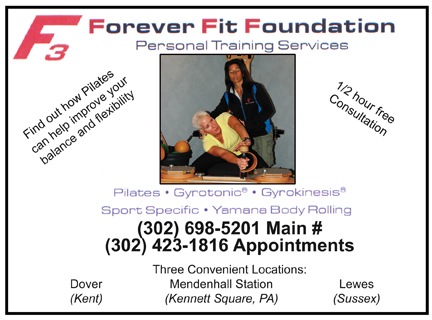Pilates & Breast Cancer
 By Nancy Hawkins Rigg,
By Nancy Hawkins Rigg,
Breast cancer leaves many women feeling disconnected from their bodies and wary of exercise. Survivors face many physical challenges after undergoing breast cancer surgery and treatment, which are often compounded by the emotional stress that results from living with a life-threatening condition. The Pilates method is a gentle form of exercise that engages the mind, body and spirit. The various Pilates exercises help to strengthen muscles, increase flexibility while increasing metabolism and promoting lymphatic, respiratory, and circulatory function. They improve balance and coordination and also help you relax and “get centered”. For these reasons it is an excellent approach to healing for breast cancer survivors.
What are the benefits of Pilates?
Fatigue
Women undergoing breast cancer treatment often find themselves facing overwhelming fatigue, especially when undergoing chemotherapy or radiation. To perform Pilates exercises correctly you have to concentrate and have mental focus, but this intense concentration will pay off. These principles help you live in the moment by keeping you focused on moving properly, with control and without momentum. Pilates offers a gentle low impact reintroduction or first time introduction to regular exercise that can help one regain strength and endurance.
Lymphedema
Many women who have had lymph nodes removed as part of their breast cancer treatment have a high risk of developing lymphedema. Women at risk for lymphedema can exercise, but it is important to strengthen the arms gradually. Because many Pilates exercises are abdominal, they are a natural fit for women concerned about lymphedema. In addition, the muscular contractions from the abdominal exercises performed in a specific sequence help propel lymphatic fluid into an area where it can more easily drain. The emphasis on deep rib cage breathing and the multidimensional breathing patterns helps ease tension, encourage lymphatic drainage, and stretch tight areas affected by scars.
Pain/Range of Motion
Pilates exercises help return strength to the shoulder girdle in a safe, comfortable manner, which helps in regaining correct muscular balance. Pilates increases muscle strength, especially in the back of the shoulders and the middle back, where you need it after breast cancer surgery. The improvement of muscular proprioception (the reception of stimuli) and kinesthesia (awareness of the position of movement of the parts of the body by means of sensory organs) in the muscles and joints; these sensations are often lost after surgery, when nerves and muscles may have been inadvertently cut.
Posture
Pilates can help you gain a more erect posture because the exercises not only work the postural muscles in the trunk and back but also require you to focus on how your body feels when it is correctly aligned. Pilates increases your ability to perform activities of daily living as you build core strength, allowing you to more easily roll over and move from different positions. Pilates takes the focus off the damaged areas of your body and what you cannot do and reinforces what you can do. You will appreciate all the movements your body is capable of (no matter how small or limited at first) and its capacity to heal.
Pilates can be a useful tool in rehabilitation for breast cancer survivors. With the help of a trained instructor, it can help a woman reclaim her physical confidence and reestablish a connection with her body.
Nancy Hawkins Riggs is the founder and owner of Forever Fit Foundation, a personal training business specializing in Pilates, Gyrotonic, Gyrokinesis, Yamuna Body Rolling and sport specific training. Forever Fit Foundation accepts clients at three sites: Dover and Lewes, Del., and Mendenhall Station, Pa., just over the Delaware line. A certified athletic trainer, she earned her bachelors degree fro the University of Delaware and her master’s degree in exercise science and sports medicine from Miami University in Ohio. Please call (302) 423-1816 or (302) 698-5201 to schedule an appointment for more information.



